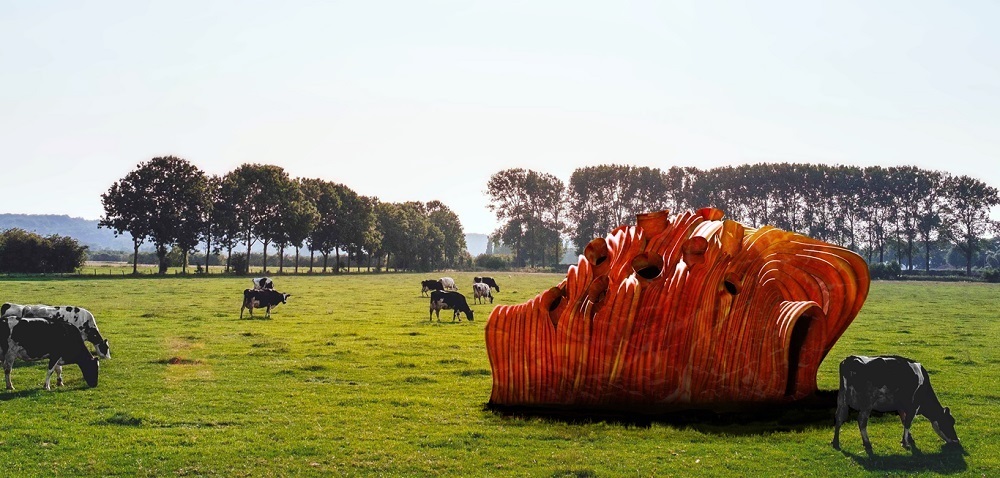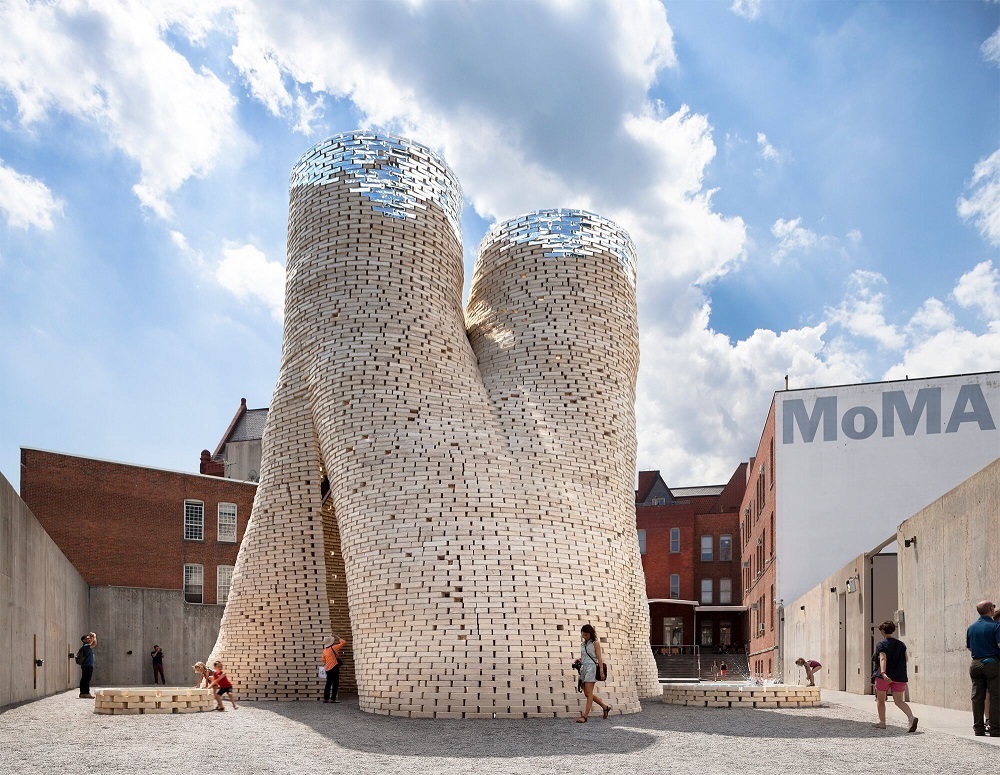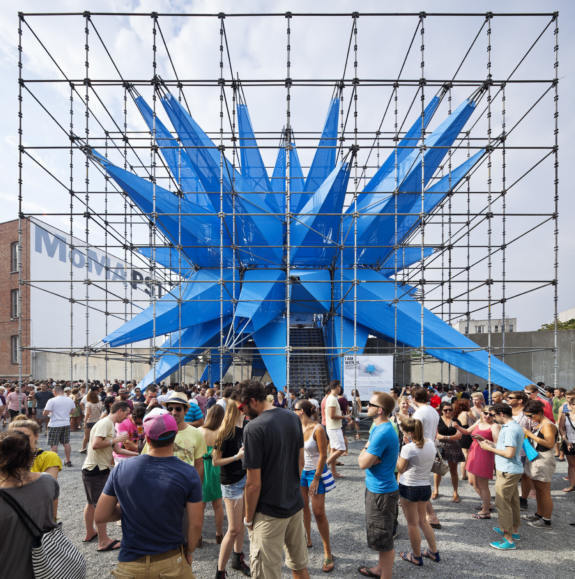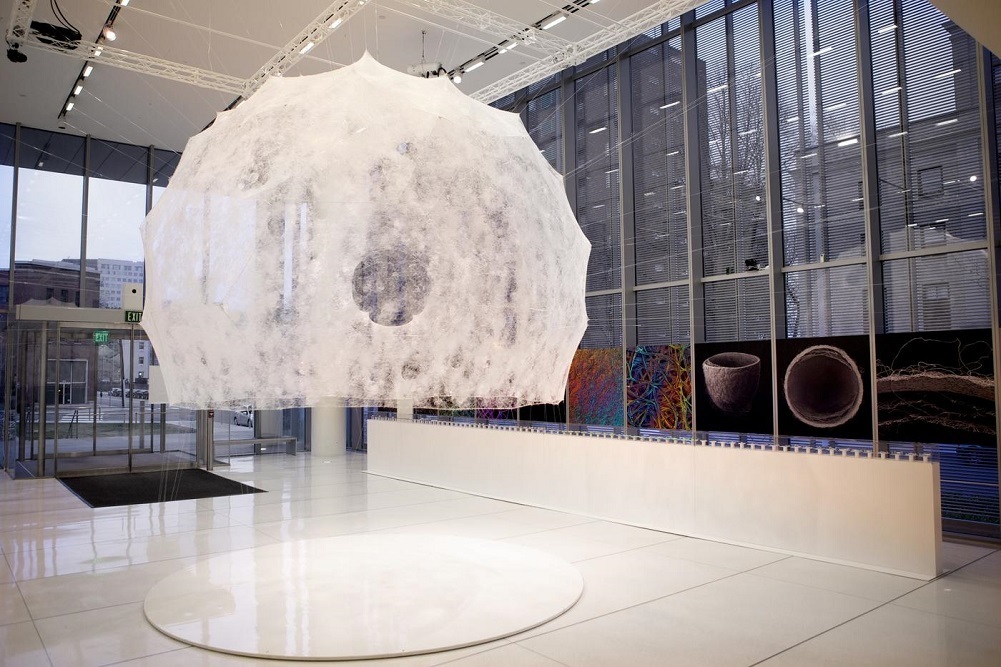This year’s New York Build Expo, hosted at the Javits Center in New York, brought together thousands of professionals in the construction and architecture fields. Among those in attendance was London-based architect Debbie Flevotomou, who delivered a riveting interactive presentation.
Titled “Architecture – Concept and Unlimited Possibilities,” the presentation highlighted several real-world examples of how architects are utilizing unique, sustainable materials in their designs. Flevotomou herself is known for her creative approach to architecture, and she’s also established herself as an artist and a ballet dancer, which she says heavily influences her architectural vision.
Flevotomou has won numerous awards for her designs, including the 2016 “Female Architect of the Year.” On her website, she states that her architectural philosophy is based on the idea that “Architecture should have a poetic dimension in order to contribute to peoples’ well-being, teach generations about this moment in time, and develop a potential social agenda — breaking free from the simple box with openings.”
Flevotomou’s passion for innovation and poetics was showcased through the architectural examples she chose for her presentation.
The Cardboard Cathedral

Designed by Shigeru Ban
Image Source: Boyloso / Shutterstock.com
One of the highlights of Flevotomou’s presentation centered on the famed Cardboard Cathedral of New Zealand. In 2011, the Canterbury region of New Zealand was struck by a devastating earthquake. In addition to killing 185 people and injuring thousands, the Christchurch earthquake caused significant damage to a number of buildings, including the city’s Anglican Diocese. In need of a quick, temporary replacement, the cathedral called upon Japanese architect Shigeru Ban, who is well-known for his humanitarian efforts.
Although the cathedral was only intended to be a temporary structure, Ban — who has previously used paper tube to construct refugee structures during times of disaster in Rwanda, Haiti, Turkey, and Japan — designed the paper-tube cathedral to last for 50 years.
Using 98 paper tubes (each one measuring 24 inches in diameter and weighing over 1,100 pounds) coated with fireproof polyurethane and flame retardants with wood support beams and a poly-carbon roof, Ban constructed a 78-foot-high, A-frame structure capable of containing 700 people. As an added bonus, because the building uses lightweight, flexible materials, it is actually safer during seismic activity than designs that utilize heavier materials, such as concrete.
A House Made from Lab Grown Meat

Designed by Terreform ONE
Flevotomou’s presentation also included a number of examples of organic architecture, including a proposed experimental, meat-cell based structure designed by Mitchell Joachim, founder of Terroform ONE, which describes itself as a “nonprofit architecture and urban design research-based consulting group.” The project is called the “In Vitro Meat Habitat,” and, if it ever comes to fruition, would be constructed using 3D-printed extrusions of pig cells to form an organic residence.
Because the cells are cultured in the lab without harming actual animals, the space is intended to be a “victimless shelter.” Other materials used include xanthan gum, collagen powder, and recycled PET scaffolding. Using sodium benzoate as a preservative, the structure would be protected against bacteria, yeast, and more.
Still only in its model prototype form, Joachim’s vision is to create a home where walls are replaced by living tissue, bones replace structure elements such as studs, and muscles that open and close replace windows. While it may sound strange, and perhaps even macabre, Joachim’s interest lies in breaking the boundaries of what sustainable construction means, and exploring architecture from a radical point of view.
Terreform has an entire portfolio of designs dedicated to this kind of organic architecture, including the Fab Tree Hab — the ultimate tree house. The plans for these homes is to use CNC machining to create organic structures that are then grafted into trees, integrating living spaces with ecosystems.
The Mushroom Tower

Designed by The Living
Another example of organic architecture included in the presentation was the Hy-Fi Tower, which was named as the 2014 winner of the Museum of Modern Art’s (MoMA) Young Architects Program (YAP) competition. Designed by David Benjamin of "The Living” architecture lab in New York City, this 40-foot tower was made from 10,000 “mushroom bricks” that were created using a mix of mycelium (the root of a mushroom) and agricultural corn waste.
Amazingly, once poured into the brick molds, this mushroom mix “self-assembles” itself into the desired shape over the course of a few days. The bricks were developed by Ecovative, a New York-based biotechnology company that specializes in “creating next generation materials through mycelium biofabrication.”
Constructed in the courtyard of MoMA PS1, a nonprofit art institute and exhibition space dedicated to contemporary art, based in the Long Island City neighborhood of Queens, New York, the structure served as a cultural event space for three months, after which it was disassembled. The bricks were then composted into soil, which was eventually was donated to local community gardens.
Air Purifying Art

Designed by Hollwich Kushner
The presentation also mentioned Wendy, another MoMA PS1 installation, and the winner of the 2012 YAP competition, as another example of architects “pushing the boundaries of what architecture can do in an urban environment.”
Designed by the Hollwich Kushner architecture team, this spiky blue structure was constructed using repurposed scaffolding and covered in stretched nylon fabric. Treated with titanium nanoparticles on the surface, the fabric is designed to clean the surrounding area’s oxygen, and reportedly can absorb 260 cars’ worth of airborne pollutants.
Silkworm Engineering

Designed by Mediated Matter of MIT
Flevotomou also touched upon the Silk Pavilion, a structure built by the Mediated Matter research group at the MIT Media Lab using a combination of CNC robotic machining and the natural “3D-printing” capabilities of silkworms.
As the perfect marriage between biofabrication and digital manufacturing, the Silk Pavilion’s geometry was “inspired by the silkworm’s ability to generate a 3D cocoon out of a single multi-property silk thread (1km in length),” and constructed “an algorithm that assigns a single continuous thread across patches providing various degrees of density.”
The project enlisted the help of a swarm of 6,500 silkworms, which were guided by a combination of variations in light, temperature, and the movements of the robotic arms that traced the pattern.
The Future of Architecture
Debbie Flevotomou’s presentation at the New York Build 2019 Expo was just a small sampling of the profoundly creative approaches that architects are taking in imagining new kinds of building concepts and sustainable construction materials. Although many of these ideas are not currently feasible for large-scale projects, or serve more as thought experiments, they provide an exciting glimpse into the possibilities that lie ahead in the world of architecture.

